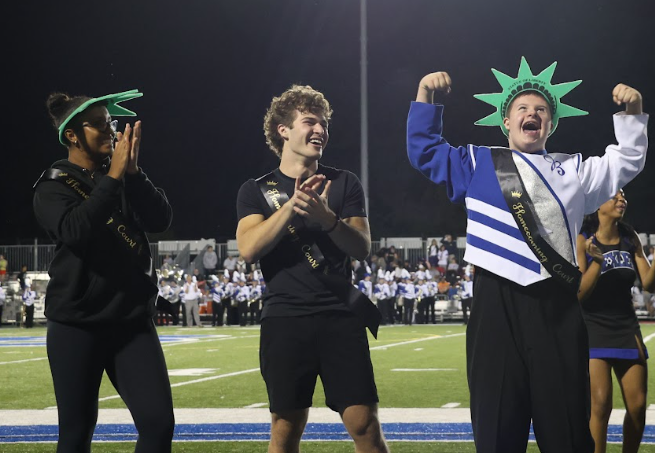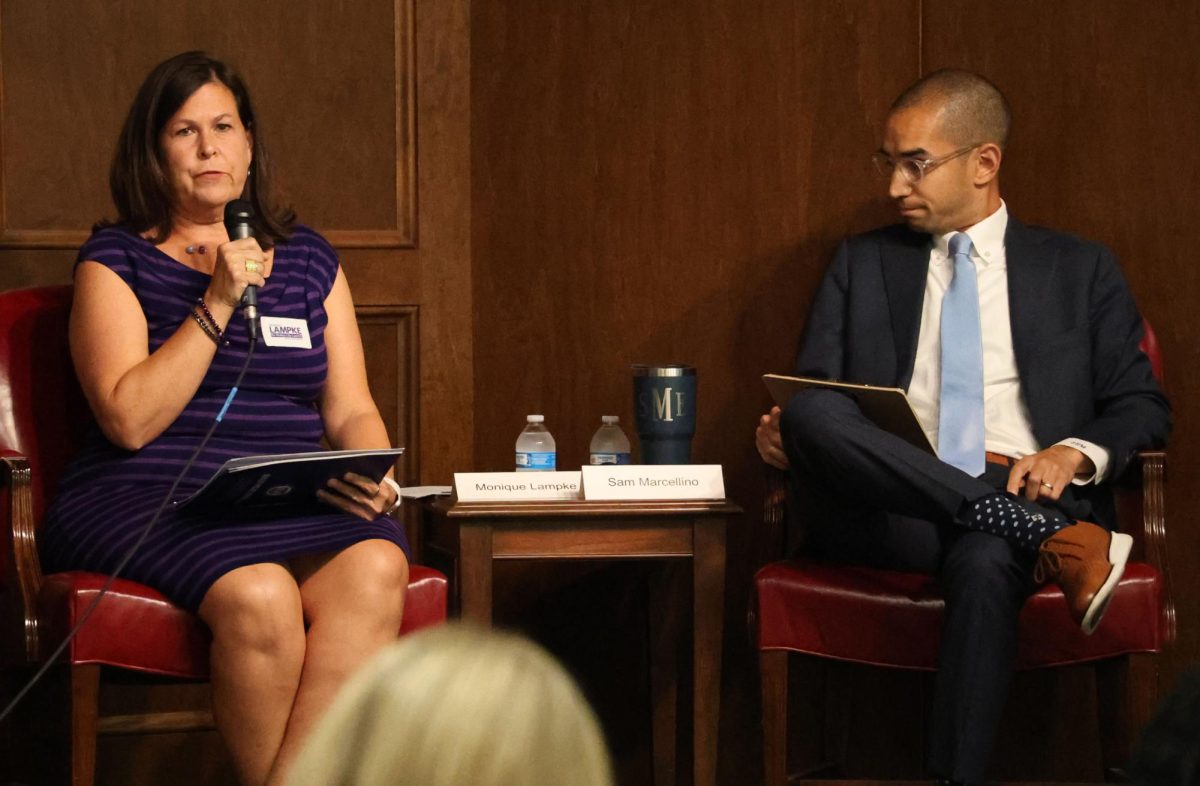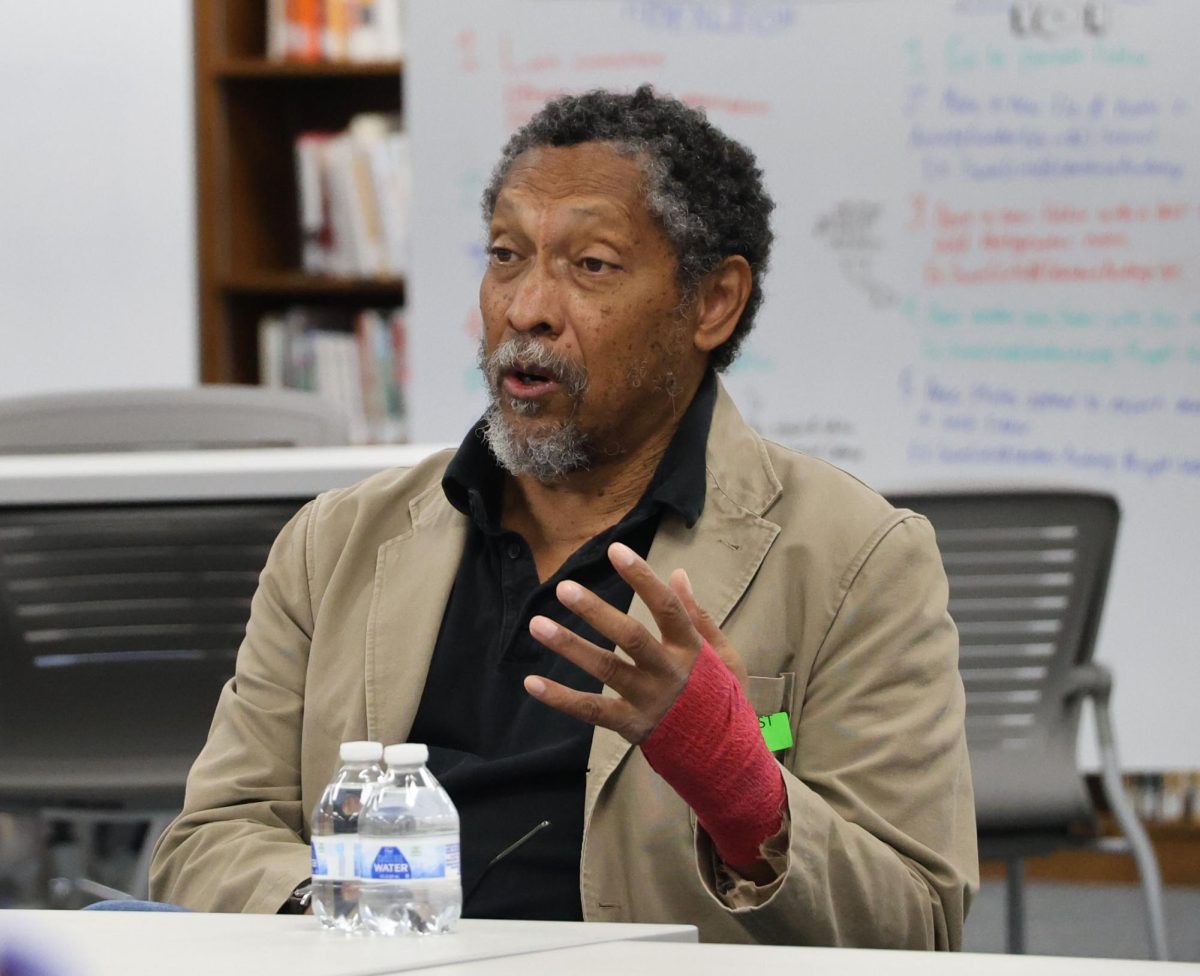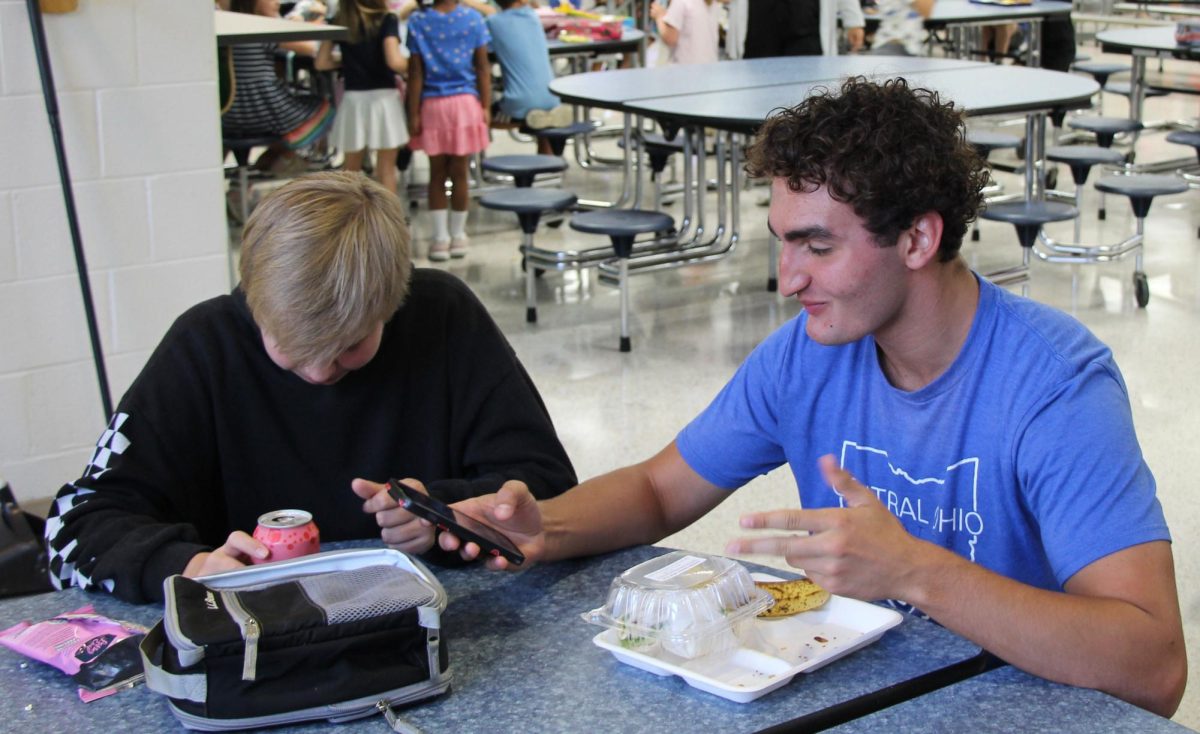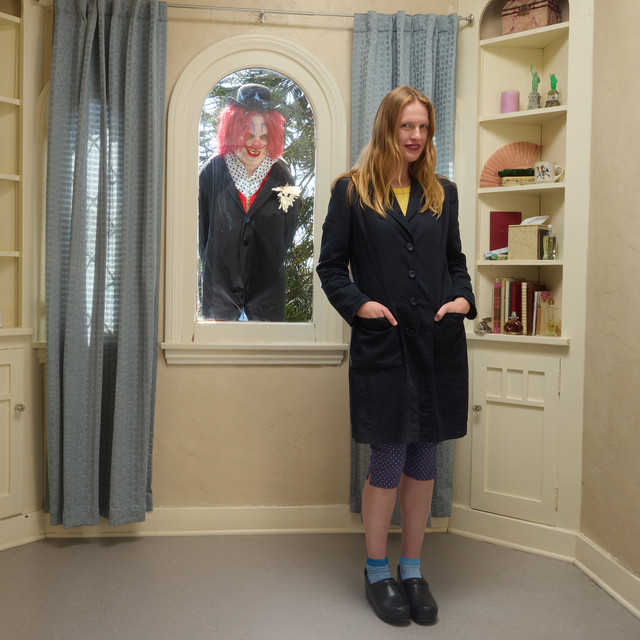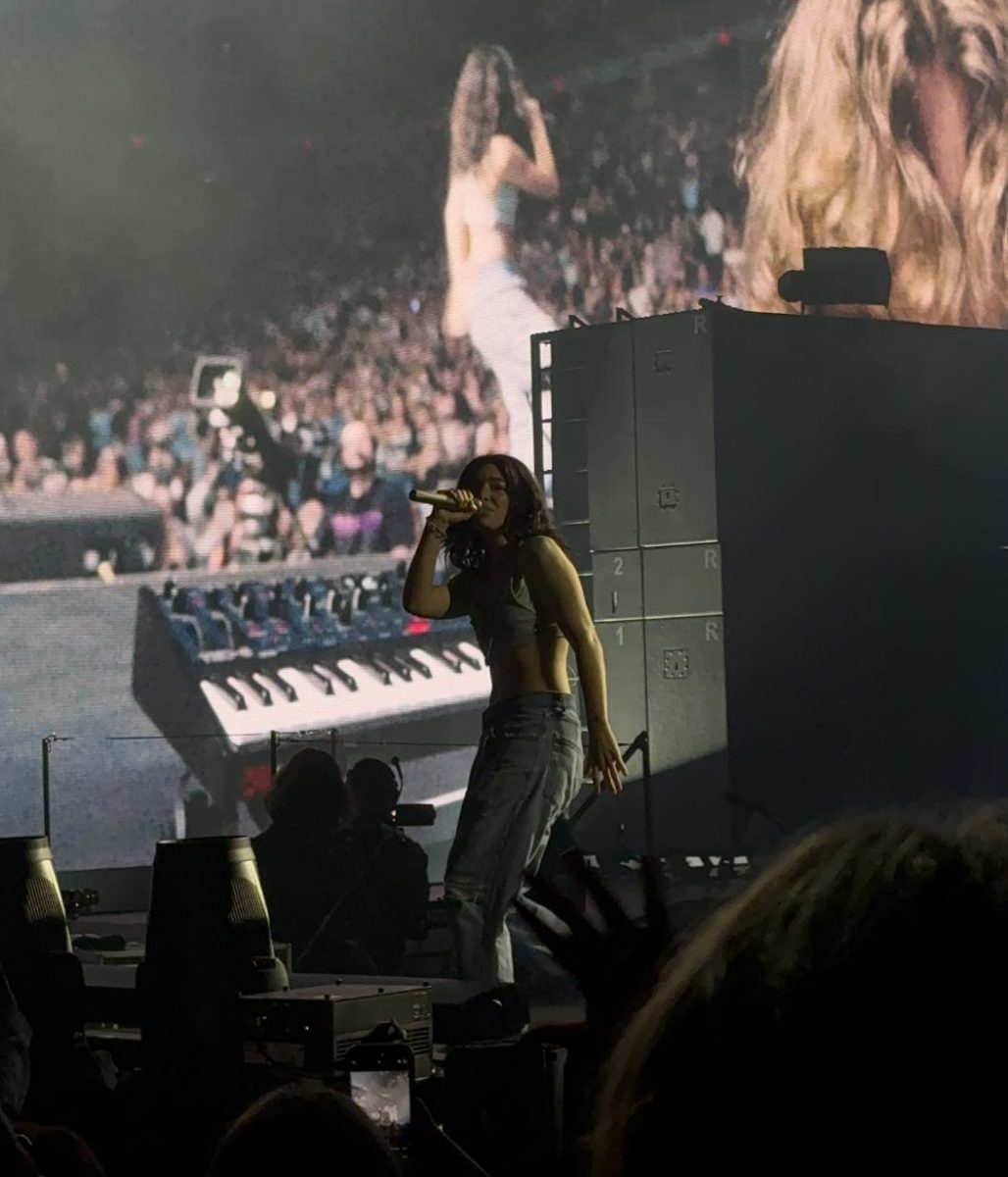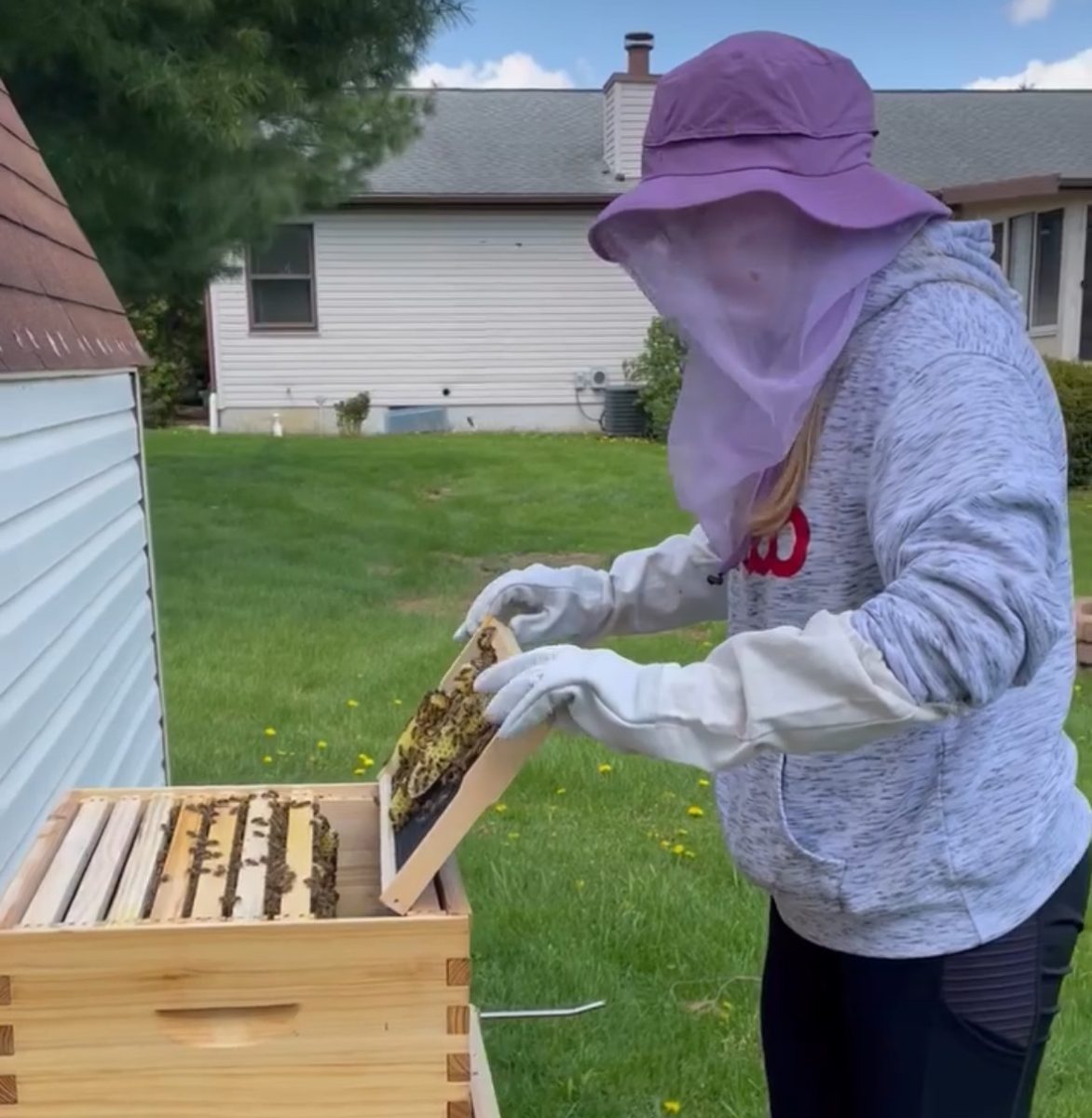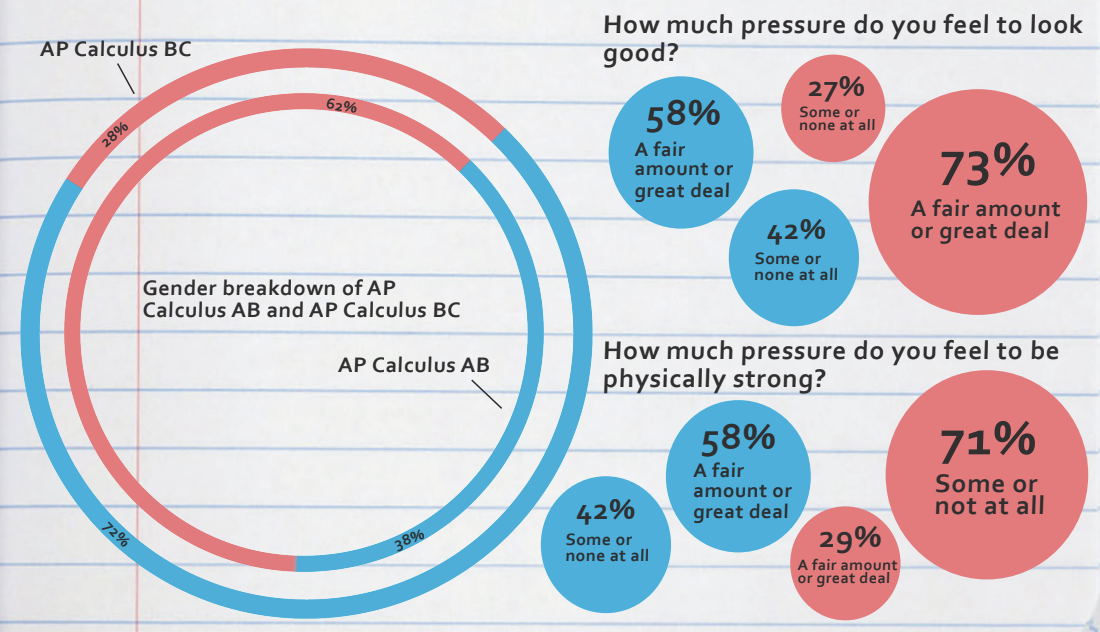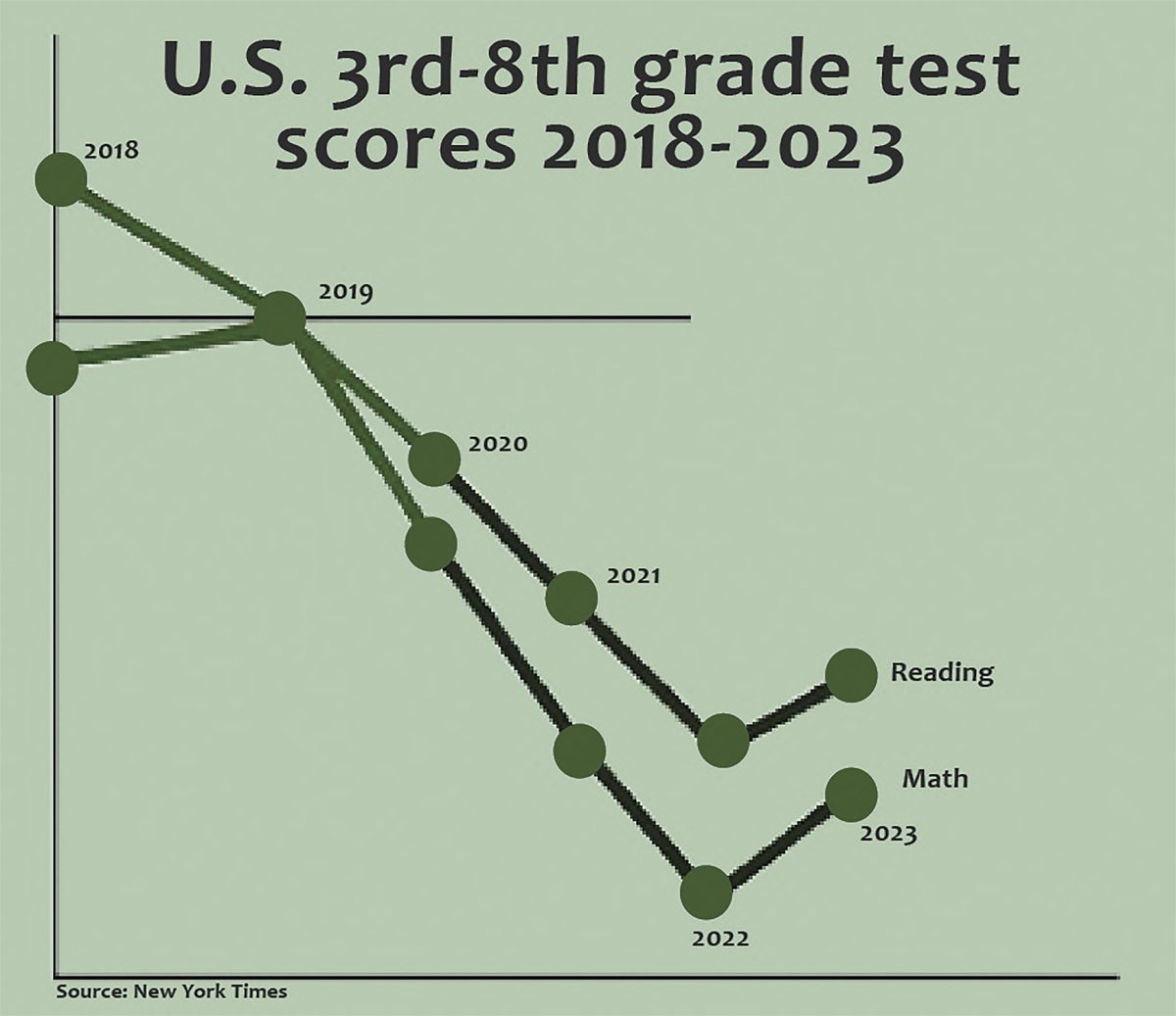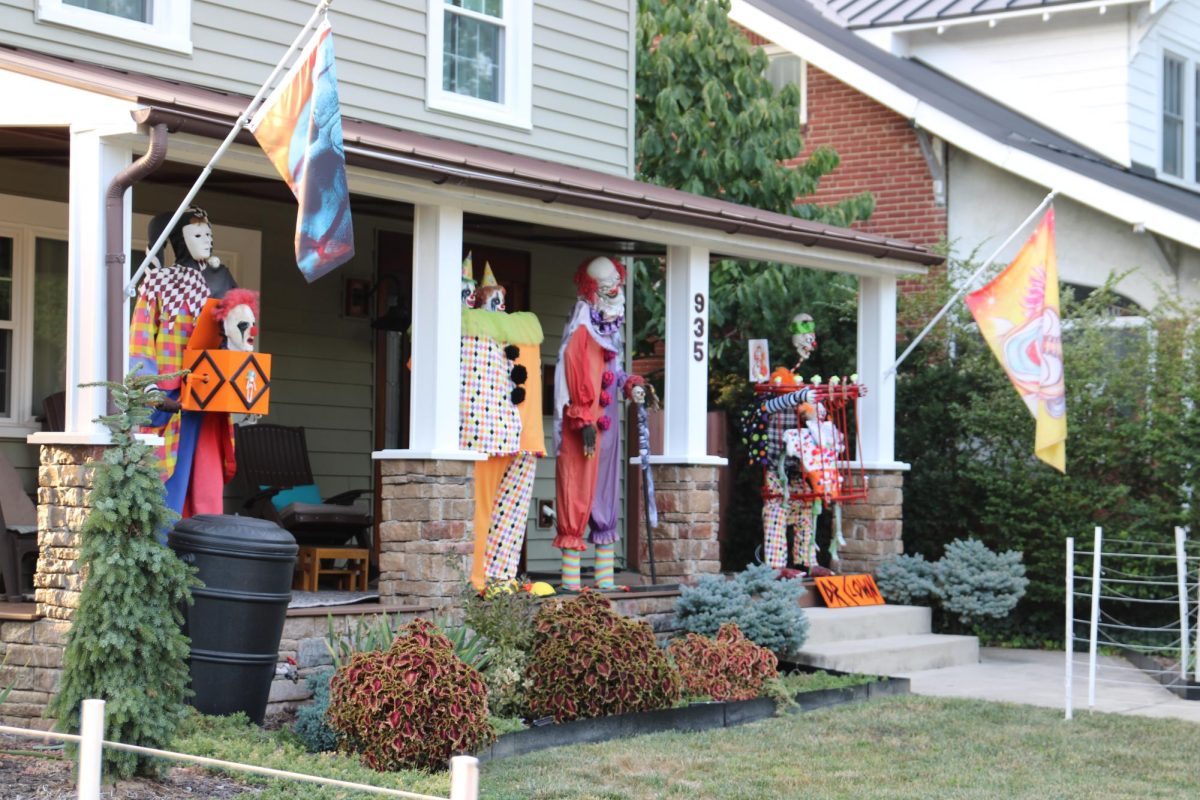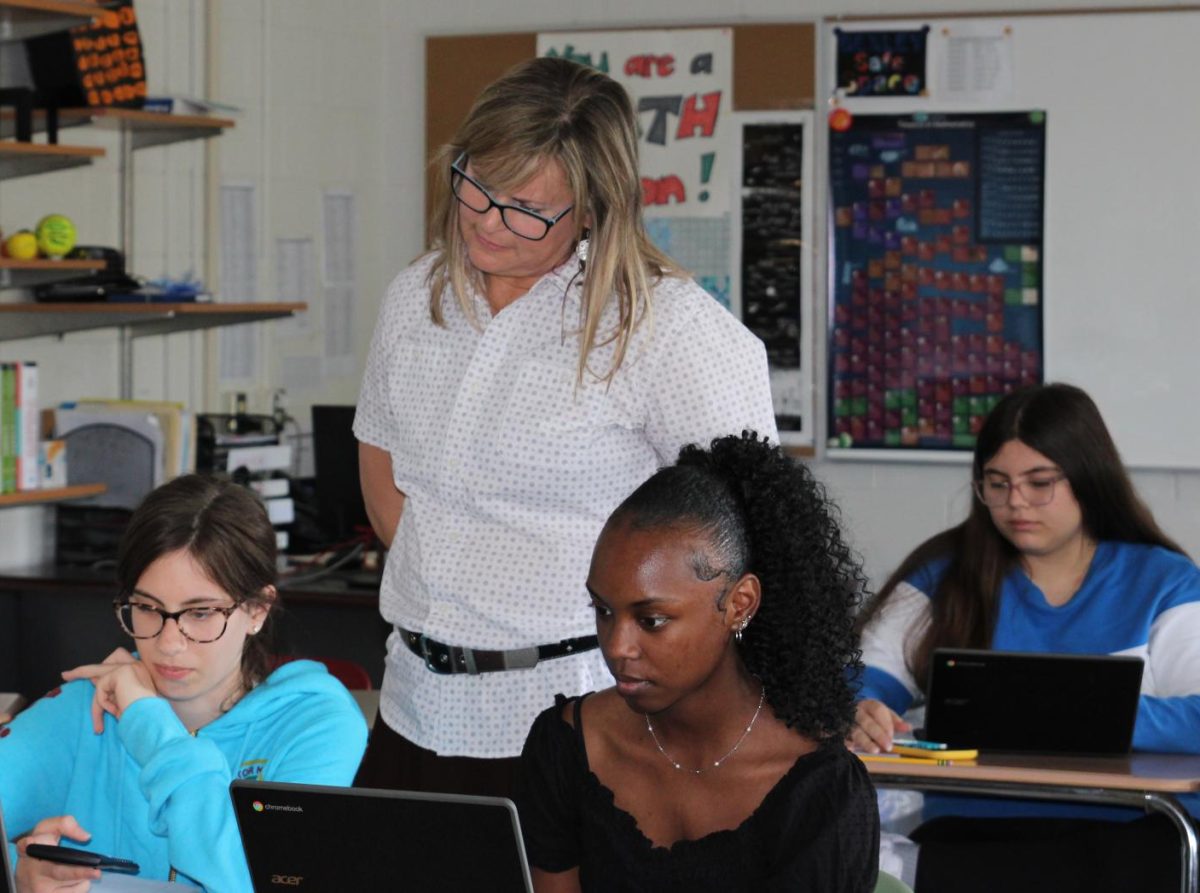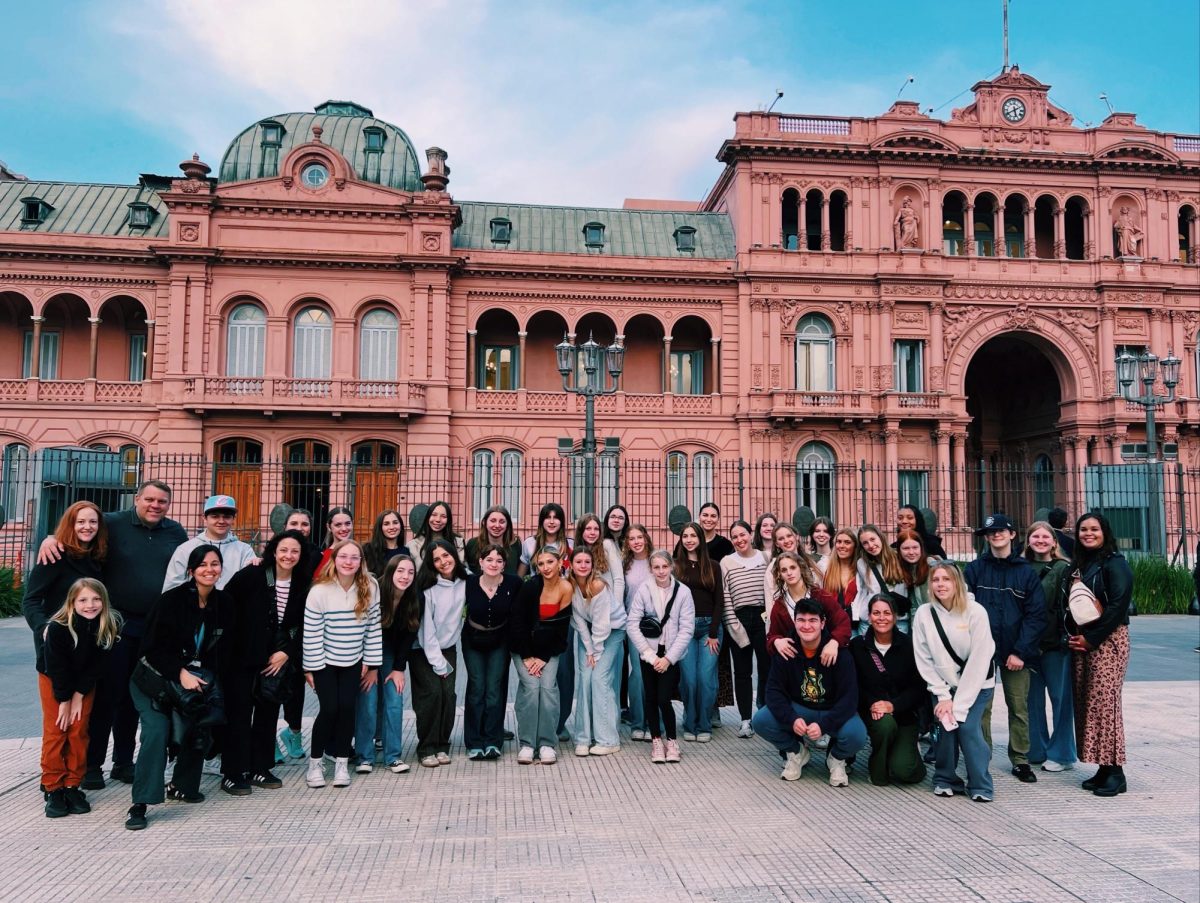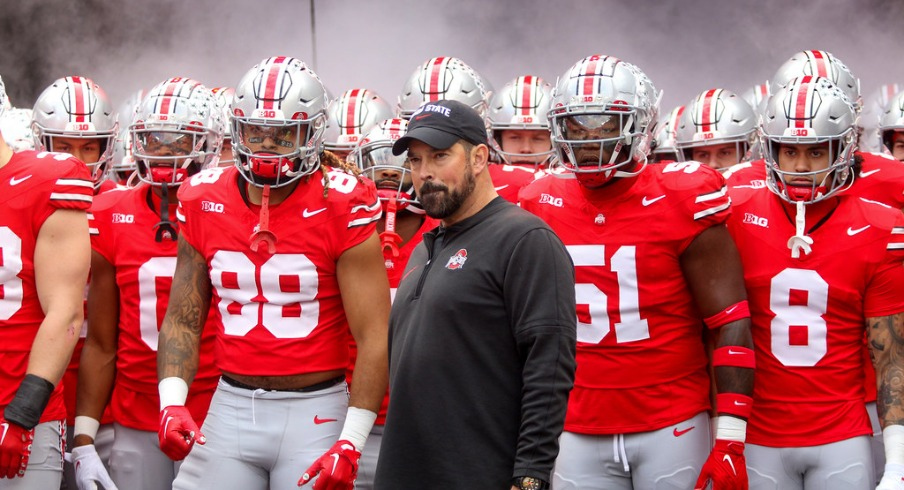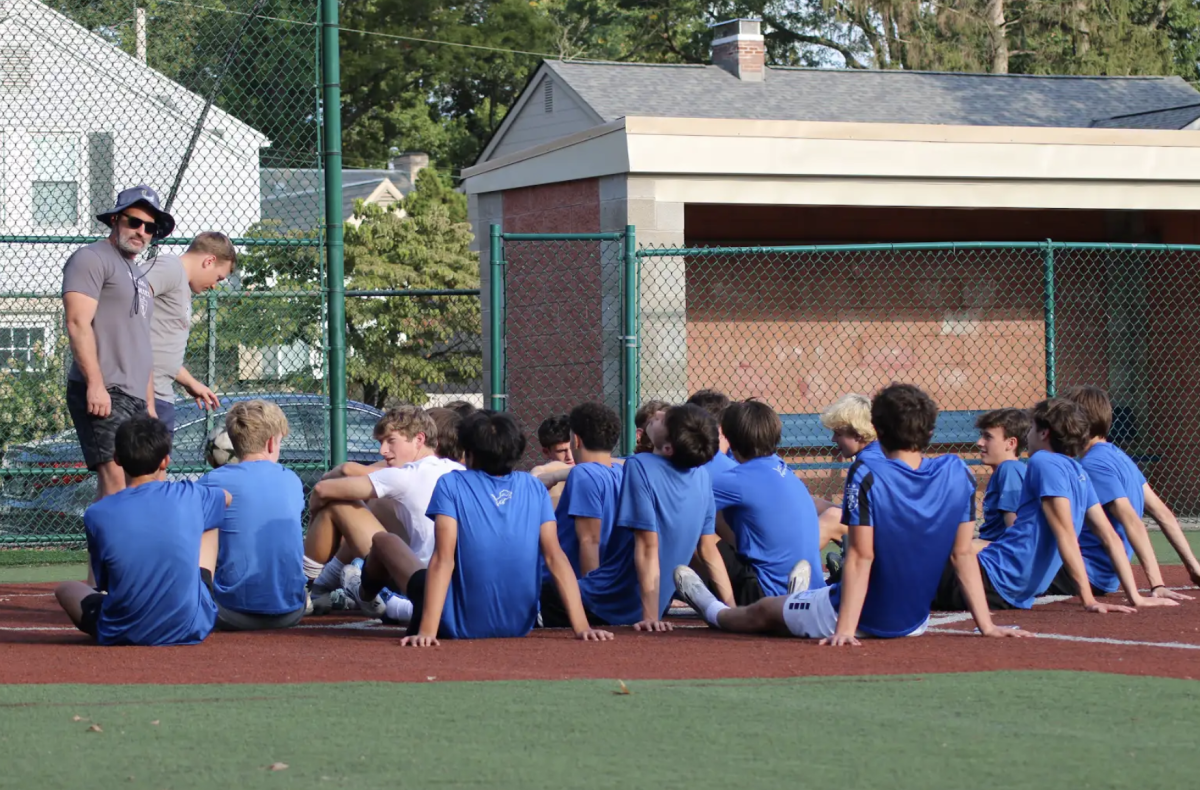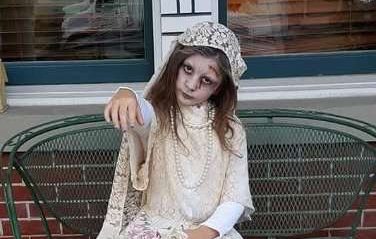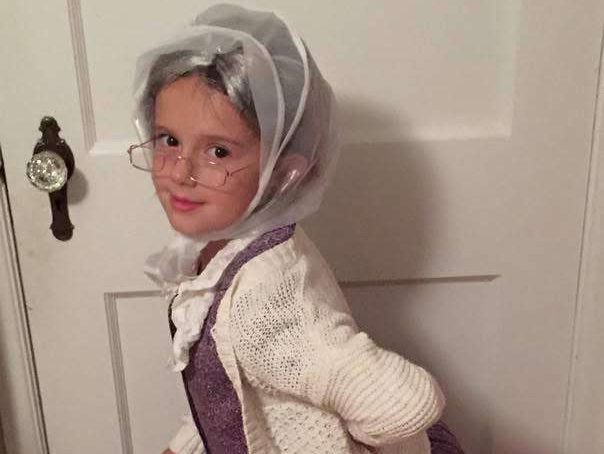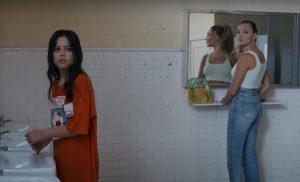
school hallway while in the restroom. (Fair use Indiewire)
Megan Park’s directorial debut “The Fallout,” released Jan. 27, is a moving exploration of student Vada (Jenna Ortega) as she grapples with the aftermath of a horrific school shooting at her high school.
The movie begins with a typical school day. Vada fidgets in class, daydreams and goes on her phone, mostly ignoring what her teacher is saying.After asking to go to the bathroom,
shots suddenly ring out in the hallway. By chance, another student, Mia (Maddie Ziegler), is also in the bathroom, and the two frantically race to hide.
The bathroom scene evokes feelings of claustrophobia and dread. The camera pans above and below the stall that Vada and Mia huddle in while shots sound outside in the hallway. The movie focuses on the experiences of the shooting victims rather than the perpetrator of the violence. The shooter is never shown on screen, and his name is only mentioned in passing.
By only portraying the victims, Park eliminates any possibility of viewers glorifying the violence or sympathizing with the offender.
Park manages to paint an incredibly realistic picture of teen life without the disruption of violence in the movie.
She draws out realistic performances from the actors whose on-screen thoughts, actions and behaviors seem entirely sincere. Vada’s relationship with her sister Amelia (Lumi Pollack), who is desperate for attention from their parents, is both believable and humorous.
As a young director, Park is particularly adept at reflecting the teen experience on the screen. The movie regularly uses social media to explain plot points, enhancing its authenticity.
However, this technique also backfires at times, as its effectiveness is undermined by the frequency with which it is used. The on-screen text bubbles pop up so often that they become a cheap plot device to further the narrative.
Ziegler playing Mia was an excellent casting decision. Mia is a cliche popular girl, but after the shooting, she and Vada form an unlikely friendship over their shared trauma.
In the movie, Ziegler is a social media influencer, just like in real life, where she is a popular creator of dancing videos. Her personal life in the real world enhances her
on-screen performance.
As the film progresses, Vada gravitates toward Mia, experimenting and losing herself in alcohol, drugs and food.
Her parents are well-intentioned, but they do not know how to help her, sparking a lot of conflict between members of her family.
Eventually, Vada goes to a therapist, finally opening up about her struggles in the aftermath of the shooting. The film is punctuated by fantastic scenes with her parents and sister before the gut-wrenching final scene.
If the movie had a storybook ending, it would lose its authenticity and realism. By letting Vada struggle to be herself after the violence, Park affirms the idea that it is okay
to not be okay.
“The Fallout” succeeds in creating a moving story because of its extremely realistic portrayal of teen life, directional choices and stirring performances by Ziegler and Ortega that culminate in this powerful and emotional film.

